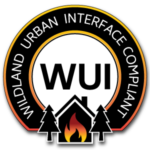Description
FireStorm® EmberMesh™ protects buildings & infrastructure against ember attacks and radiant heat. Ember attacks account for up to 90% of buildings lost during a wildfire. FireStorm® EmberMesh™ stops embers from entering gaps and reflects radiant heat caused by fires. Also available in vents for wildfire defense.





Reviews
There are no reviews yet.